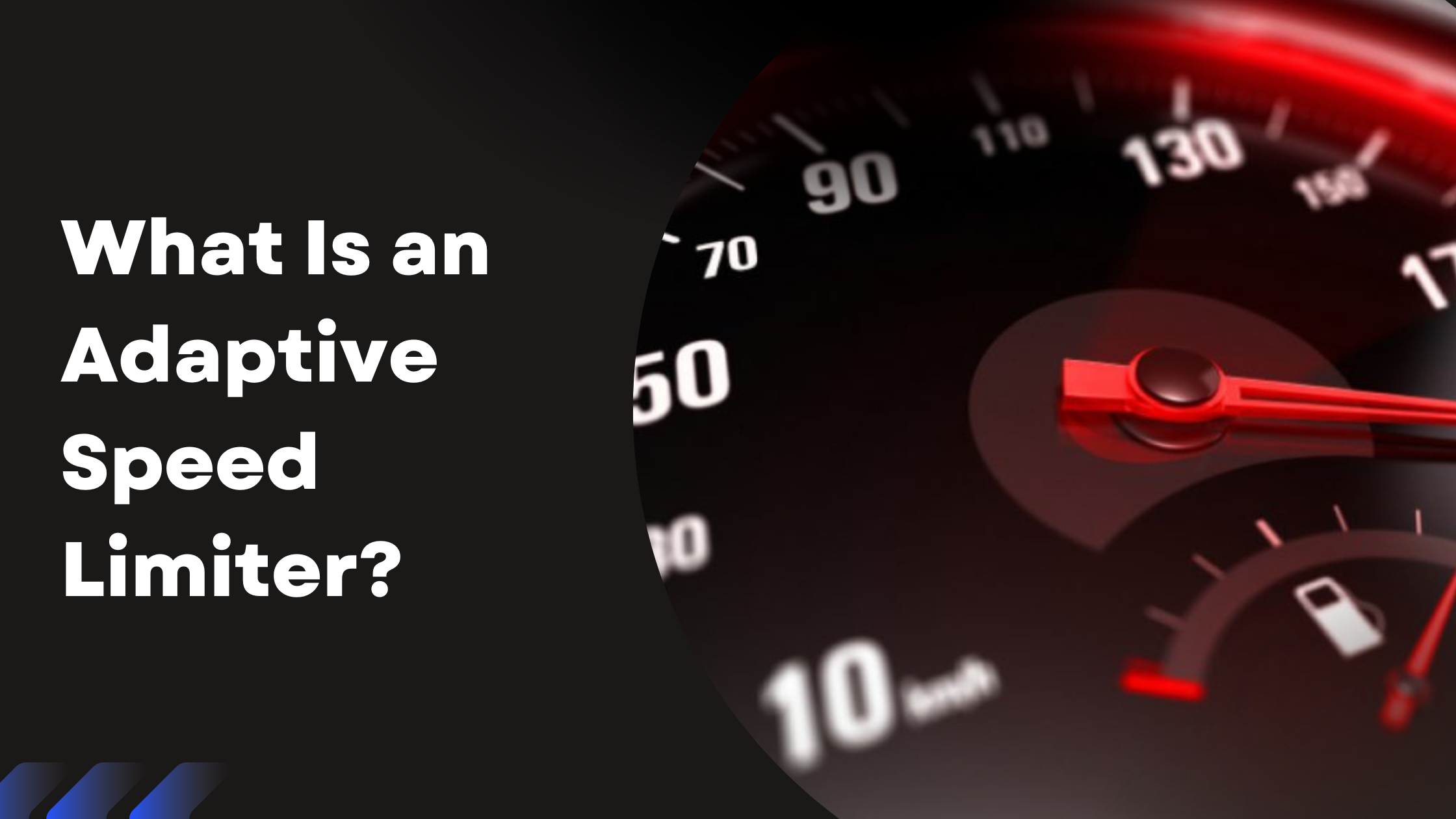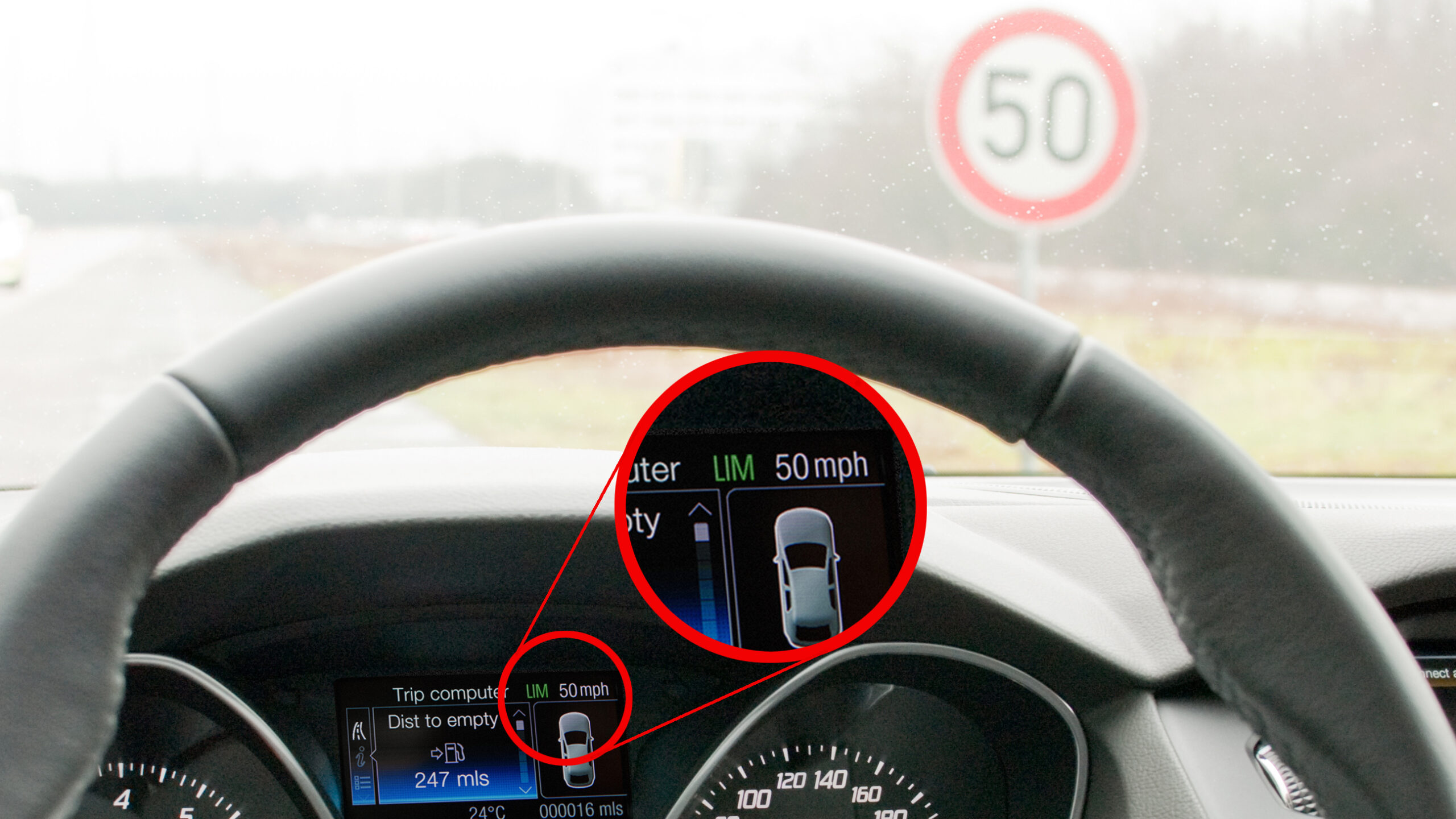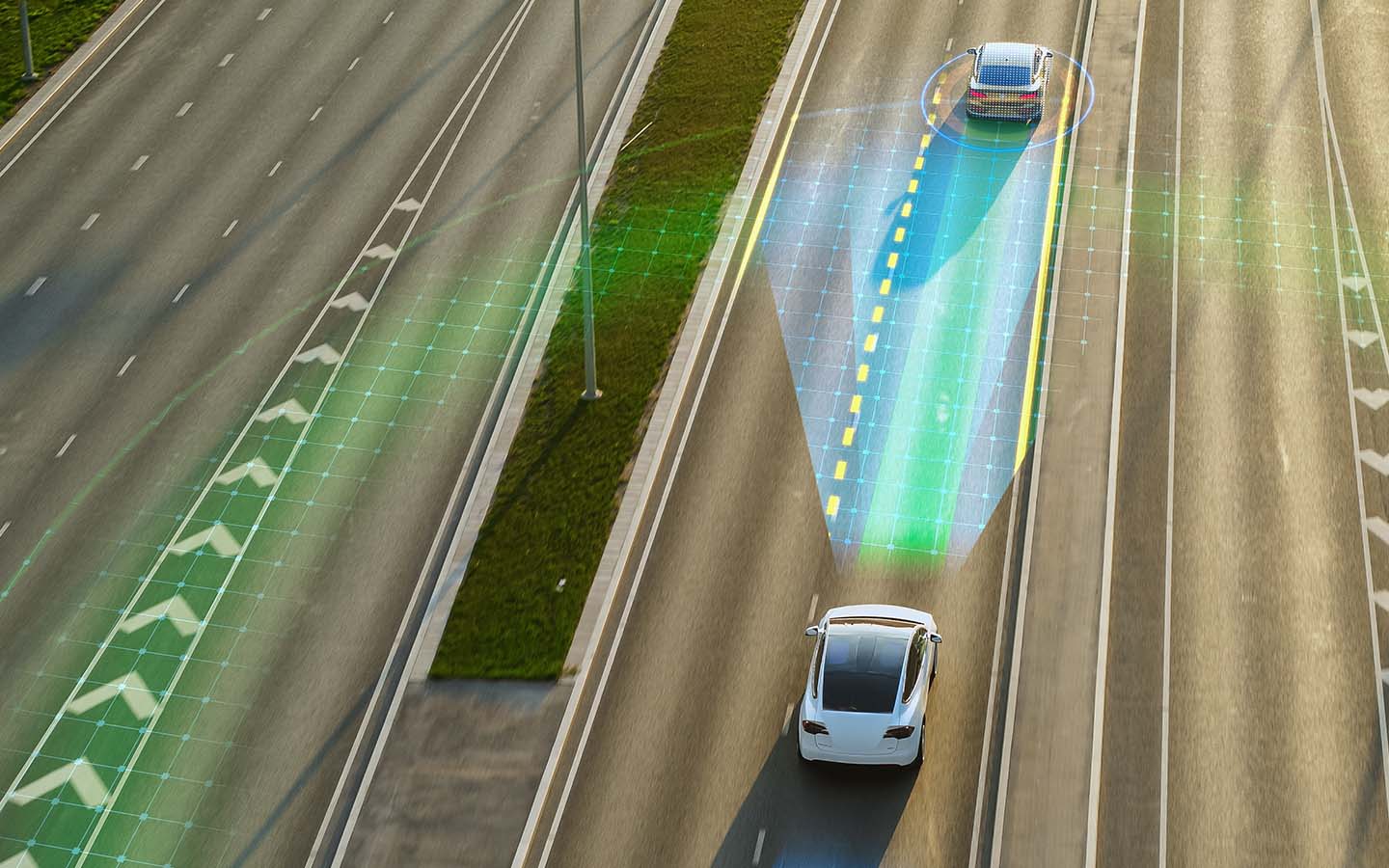What Is an Adaptive Speed Limiter? Everything You Need to Know
May 25, 2025 Resolute Dynamics

You know that moment when you’re just driving, not thinking too much—and suddenly, you look down and realize you’ve been going too fast for a while? It’s a common slip. That’s when something like an Adaptive Speed Limiter (ASL) quietly steps in. It doesn’t panic. It simply helps you stay within the limit, without you having to do a thing.
This isn’t science fiction. It’s already in today’s vehicles, working silently.
Let’s look at how it works, why it helps, and why it might save more than just fuel.
✅Key Takeaway:
Adaptive Speed Limiters fine-tune vehicle speed using live road signs and GPS input—helping drivers stay within limits, avoid crashes, and cut fleet expenses without needing constant attention. Running quietly behind the scenes, they’re less about restriction and more about driving with intelligence and safety built in.
What Is an Adaptive Speed Limiter?

In plain speak: it’s a system in your vehicle that reads the speed limit signs (yes, literally), matches that with location data, and makes sure your car doesn’t push past that legal limit. It adjusts dynamically—meaning if the limit drops from 80 to 60 km/h, your car responds, no footwork needed.
Unlike those old-school limiters where you set a cap manually—or cruise control that chugs along at one fixed speed—this system responds to the world around you.
Road sign changes?
Construction zone?
School crossing at 3 PM on a Tuesday?
Yep, it adapts. And it does it fast.
A Quick Personal Take
When we started developing vehicle vision systems at Resolute Dynamics, we weren’t trying to reinvent the wheel—we just wanted drivers to have a smarter co-pilot. Watching ASLs evolve from clunky beta tech to near-invisible guardians of road safety has been a surreal ride. And the best part? The system usually knows the road better than the person driving. That’s not an insult. It’s just honest tech.
Why Now?
Governments, especially across Europe, are moving toward mandatory ASL features. It’s part of a bigger push to cut down on speed-related crashes. And with commercial fleets under pressure to improve safety and trim fuel costs, ASLs are shifting from “nice to have” to “don’t leave the garage without it.”
Oh, and insurers? They love it when drivers follow the law. So yes—this tech might even earn you a discount.
How Does an Adaptive Speed Limiter Actually Work?
Okay, so your car knows the speed limit. But how? Is it spying on road signs? Reading your mind? Close.
It works through a combo of sensors, mapping data, and a bit of digital wizardry that runs faster than your cousin who claims he “almost went pro.”
Let’s break it into three core steps:
1. Eyes on the Road — Literally
Most ASL systems rely on a forward-facing camera. Usually it’s tucked near the windshield or rear-view mirror. It’s not there to take selfies—it’s there to read road signs.
This camera is smart. It can:
- Spot standard speed limit signs
- Catch temporary ones (think construction zones)
- Ignore signs on the back of trucks (seriously, that’s a thing)
- Recognize regional variations (European round signs, electronic overhead displays, etc.)
In other words, it knows the difference between “Speed Limit: 60” and “Speed Limit: 160” plastered on a race car ahead of you. We’ve tested it. You’re welcome.
2. GPS Knows the Backup Plan
But what if a tree’s blocking the sign? Or it’s been removed (you’d be surprised)? The ASL doesn’t panic. Instead, it pulls location data from GPS and cross-references it with digital maps—like a friend who double-checks the route even after you told them you’re “pretty sure it’s this left.”
Many systems now use high-res, frequently updated mapping data from providers like HERE or TomTom. Some even link up to cloud services to stay current on construction changes or temporary zone limits.
In other words, it doesn’t just guess—it double-checks.
3. Brain Meets Brawn: Speed Control
Once the ASL has figured out the correct limit, it passes the info to your car’s control system. That system then adjusts how fast you can go. Smoothly.
- No harsh braking
- No “slamming the brakes because you hit 51 in a 50” drama
- Just a gentle reduction in throttle
It’s like a very calm driving instructor who doesn’t shout—but gets the job done anyway.
You can usually override the system, too. Press the pedal hard enough, and it’ll let you power through (say, to overtake). But otherwise, it holds the line—quietly and constantly.
Why Adaptive Speed Limiters Actually Matter

Let’s be honest. No one wakes up thrilled about speed limiters. They don’t make your car faster, flashier, or more fun. But they do save lives. And fines. And fuel.
The Safety Factor
Speeding is still one of the top causes of accidents worldwide. It’s not just about reckless drivers doing 160 in a 100 zone—it’s people distracted, tired, or just unaware the limit changed 3 signs ago.
ASLs step in like a safety net. They’re not yelling “SLOW DOWN!”—they just quietly prevent you from creeping past that legal boundary in the first place. Especially in:
- School zones
- Foggy highways
- Construction detours at 2am
Fleet Operators Love These Things
Now, if you’re running a fleet of vans or delivery trucks, this tech is a game changer.
A few reasons why folks in logistics and commercial transport are paying attention:
- Fewer speeding tickets = lower insurance premiums
- Better compliance with local driving laws
- Reduced fuel costs because no one’s gunning it, then slamming the brakes
- Digital proof you were following the law if something goes wrong
At Resolute Dynamics, we’ve worked with fleet managers who say the ASL alone paid for itself in three months—just in fines avoided.
But Let’s Not Pretend It’s Perfect
As much as we’d love to say “problem solved”—there are caveats.
- Camera issues in poor weather (heavy rain, snow, dust—especially if you’re in the Middle East desert roads)
- Outdated GPS data in new neighborhoods
- Driver annoyance when they feel like the car is “babying” them
And yes, some folks override the limiter just to make a point. Human nature, right?
That said, the tech is getting smarter every year. And drivers? They’re slowly warming up to the idea that having help staying legal isn’t a bad thing.
What’s Next for Adaptive Speed Limiters?
Here’s the thing: Adaptive Speed Limiters aren’t a standalone gimmick. They’re a piece of a much bigger puzzle.
They’re quietly paving the road toward a future where vehicles don’t just follow laws—they understand them, anticipate them, and adapt in real-time. That’s a massive shift. Not just in safety—but in how we think about control.
It’s All Connected
Modern ASLs don’t operate in a vacuum. They’re already teaming up with other driver-assist features like:
- Lane keeping systems
- Emergency braking
- Blind spot detection
- Adaptive cruise control
Together, these features form a sort of digital safety squad. The car monitors more than we ever could, reacts faster than we ever will, and rarely gets distracted by coffee or text messages.
And in fleet environments? It gets even more interesting. When ASLs are linked to cloud-based platforms—like the ones we help build at Resolute Dynamics—managers get real-time insights, alerts, and compliance dashboards. It’s like giving your entire fleet a smarter brain.
Are We Headed for Autonomy?
Kind of—but not overnight.
ASLs are one small—but crucial—step toward semi-autonomous driving. They teach drivers to trust technology in small doses, like speed regulation. That sets the stage for bigger leaps, like cars that handle entire routes on their own.
Still, most drivers aren’t ready to fully let go of the wheel. And that’s okay. These systems aren’t here to replace humans—they’re here to help us drive better, safer, longer.
Final Thoughts: Don’t Call It Just a Limiter
If you’re picturing some annoying gadget that nags you when you go 5 over, you’re missing the point.
This is about clarity. Calm. Control.
It’s your car saying, “Hey, I’ve got your back.”
Whether you’re a logistics company tired of compliance headaches or a daily commuter who just wants to make it home without the stress of one more speeding ticket, Adaptive Speed Limiters are quietly reshaping how we drive.
And honestly? It’s about time.